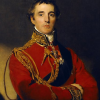
Lara Kriegel, “On the Death—and Life—of Florence Nightingale, August 1910”
This essay examines the death, and the life, of Florence Nightingale, the great nursing heroine of the Crimean War. An eminent Victorian, Nightingale passed away at the ripe old age of ninety in 1910, at a time when Britain was witnessing great internal strife and facing looming international tension. By that moment, the Crimean War was a thing of the distant past. Even so, Nightingale’s death served as a national tonic. It allowed mourners to rekindle the myths of Nightingale’s lifetime that had unified a ravaged nation in the wake of the Crimean War. Nightingale’s most important reforming efforts, which included nursing education, army improvement, and sanitary reform, both in Britain and in India, would postdate the Crimean War. However, the image of a young Nightingale ministering to the troops in the Crimea would remain the dominant one, not just in her life, but at her death as well. As it assesses the death and life of Nightingale, this essay focuses on two moments of celebrity and mythmaking in the long career of the heroine: the making of her legend in the Crimea and its resurrection at her death. It follows earlier literature, both generated during the nineteenth century and written by those who study it, establishing Nightingale as the avatar of Victorian womanhood. Accordingly, it seeks to understand Nightingale’s passing as a belated death knell to the Victorian age.

Sean Grass, “On the Death of the Duke of Wellington, 14 September 1852”
This essay discusses the death of the Duke of Wellington on 14 September 1852, which is notable less for the fact or manner of his death than for the spectacular funeral that followed two months later, on 18 November. By the time of his death, Wellington was already a kind of living monument, a last grand hero of England’s bygone Romantic age. Consequently, and precisely because it followed on the heels of the Great Exhibition of 1851, Wellington’s death crystallized a pivotal cultural moment, when England’s Romantic past gave way finally and decisively to the pressures of commodity, celebrity, and spectacle that had been mounting for a half-century, and that would characterize the increasingly modern tone of Victorian England. First, this essay discusses the lavish arrangements for Wellington’s state funeral, then it attempts to describe the nation’s complex impulses simultaneously to mourn and commodify the great Duke. Finally the essay captures, as much as possible, the ways that Britons – from Queen Victoria to William Gladstone to Charles Dickens – responded to this moment, unlike any other in English history.
